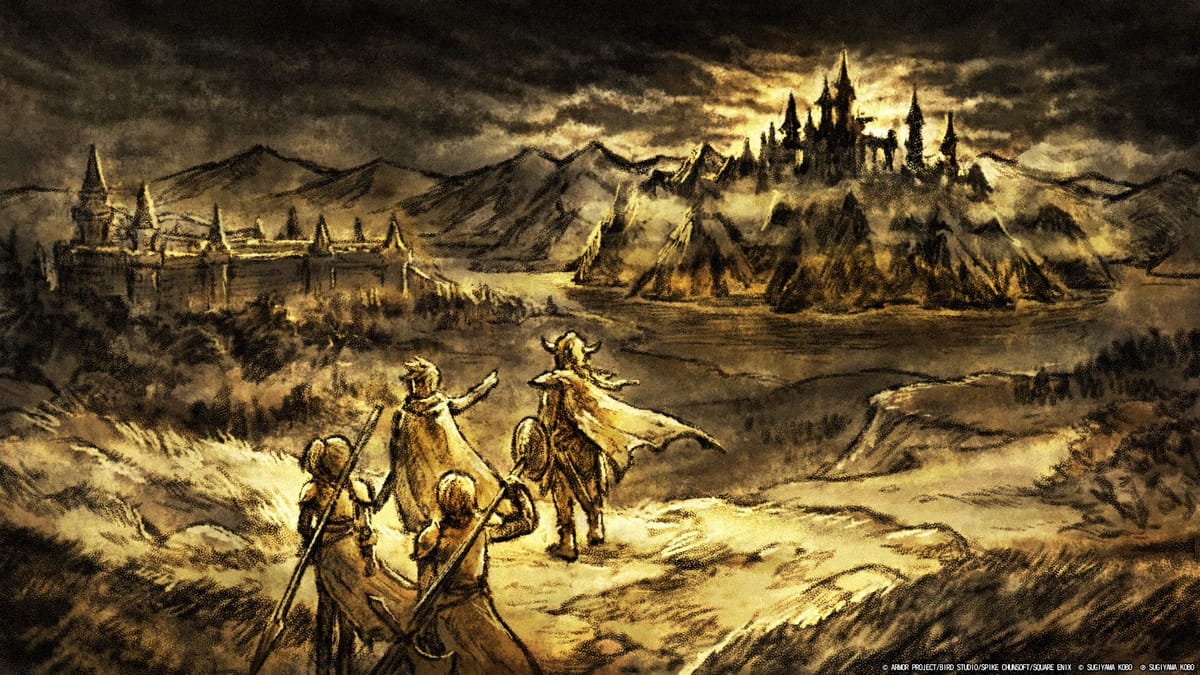
Dragon Quest might just be the most important game ever made. It wasn’t the first to bring stats and turn-based combat to the digital realm, but it is by far the most influential. This 1986 Famicom title by Cunsoft simplified and popularized RPGs in Japan. Final Fantasy may have beaten it to the punch in North America in 1987, but guess what Final Fantasy was inspired by? Fast forward to today, and just about every AAA game has RPG elements in it, like stats, leveling, and other progression systems. Games like Call of Duty, Pokémon, and even 2018’s God of War would not exist without the groundwork laid, at least in part, by Dragon Quest.
Last year, in lieu of Dragon Quest XII news, we got the first part of a series of HD-2D style remakes of the original NES Erdrick trilogy: Dragon Quest III. If you’re confused as to why they started with the third one, stop asking questions and just go play it. Now, the other two parts of the trilogy arrive in one convenient package: DRAGON QUEST I & II HD-2D Remake. Like III before them, these games have already seen more than their fair share of remakes. However, unlike III, these particular takes add a ton of new story context and other features that set them apart.
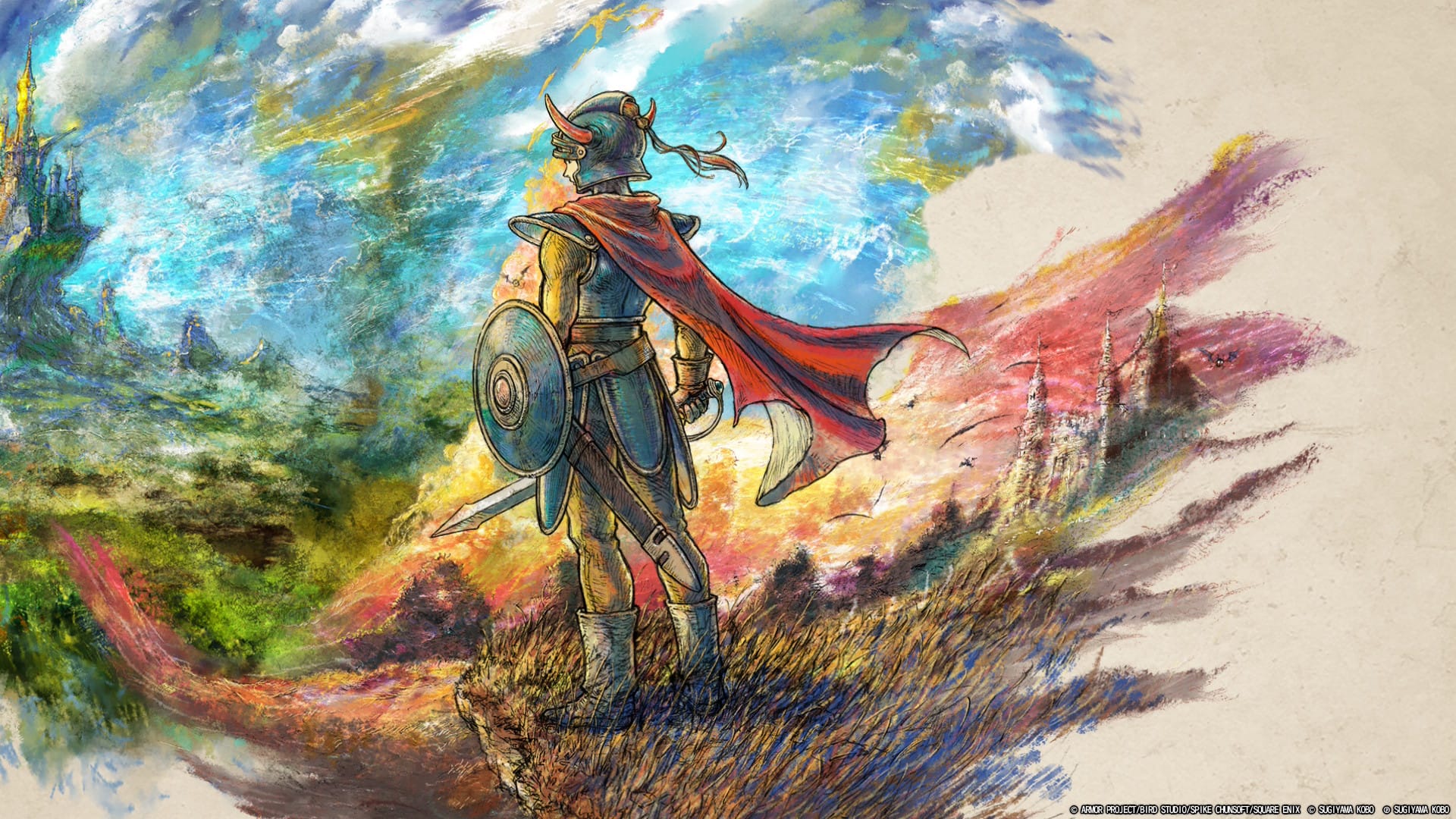
DRAGON QUEST I
The Kingdom of Alefgard needs a hero, someone with the blood of Erdrick coursing through their veins, and according to a voice in your dreams, that’s you. Alone, you’ll explore the continent, save the princess, and defeat the Dragonlord before his darkness covers the world.
Dragon Quest is somewhat unique among RPGs in that the Hero is the only party member for the entire game. If he dies, that’s it - game over. In every other version of the game, fights are also simple, one-on-one affairs; just defeat your foe before they kill you. In this remake, however, more often than not, you’ll be battling hordes of the Dragonlord’s monsters. It’s a very interesting choice for a game that’s as tight as the original Dragon Quest, and while I don’t think it’s very balanced anymore, the weight of every turn you take will have you planning ahead a lot more than other RPGs.
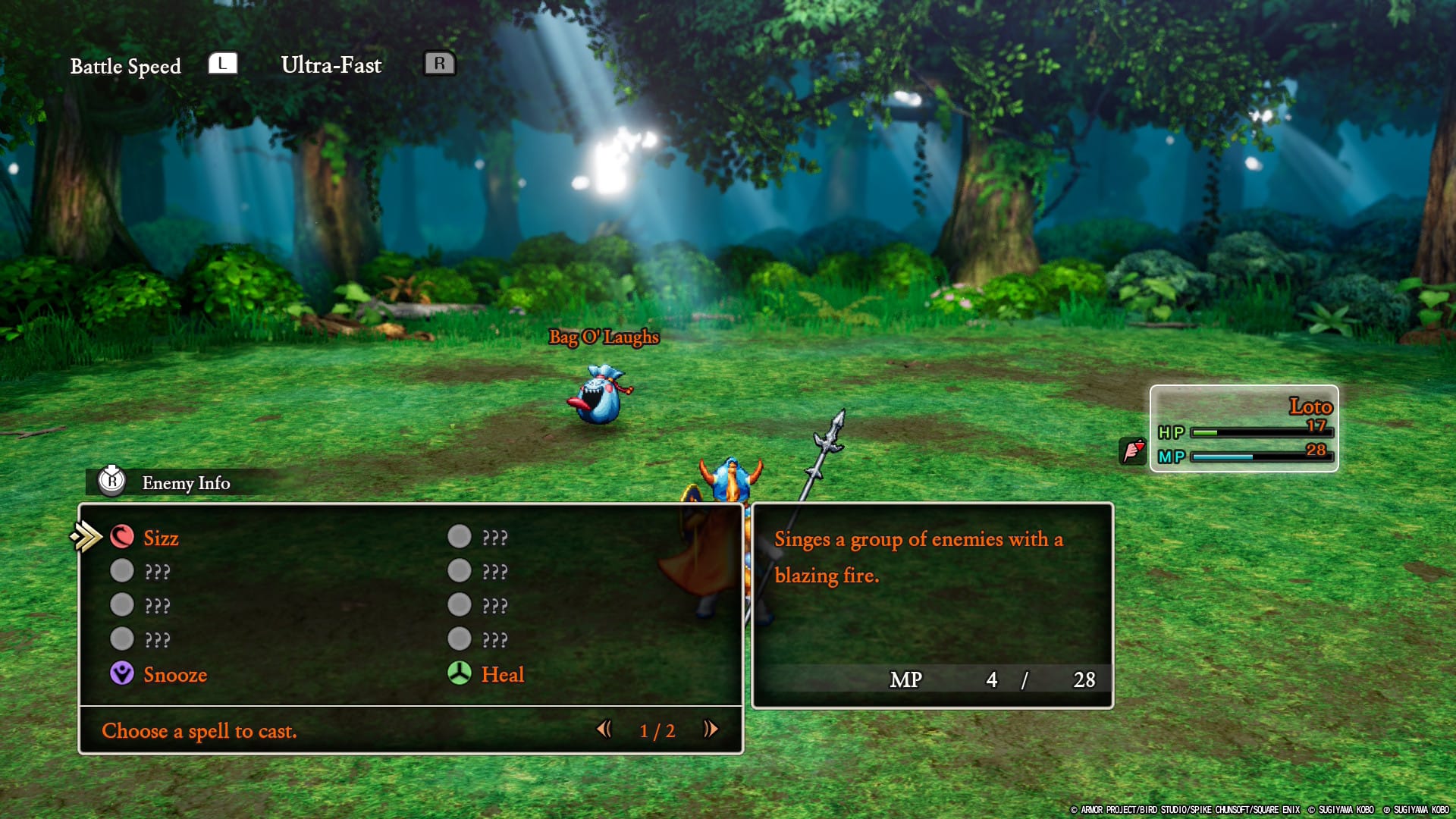
It feels great when you focus down one enemy and have exponentially less incoming damage, meaning you can attack more often. It feels less great when the enemies immediately call in another monster with full health, or a boss takes you from full HP to dead before you can even act. Battles in this style can be more like puzzles, asking you to figure out the enemy’s pattern or weakness and respond accordingly with your vast toolkit of spells, items, and abilities. In practice, the game is more reliant on grinding, gear, and luck. The first few hours are relatively smooth sailing; there’s no immediate requirement to grind right after leaving Tantegel, but after the halfway point, you’ll start hitting roadblock after roadblock. Bosses like in the second half feel like you’re just rolling the dice every turn to see if they kill you or not. Buffs, debuffs, and defensive options didn’t seem to make any difference, as every boss will have multiple actions every turn. Even after grinding five levels, switching to easy mode temporarily, and wearing the best possible equipment, I didn’t really feel like I could figure out these bosses. I just had to keep throwing myself at them and hope I’d eventually win.
These are infrequent but very annoying portions of the game, though it does help to enhance the narrative in that it really does feel like you’re up against impossible odds. Shockingly, the narrative is absolutely the best part of this remake. I would argue that a lot of the additions to Dragon Quest III’s remake were just giving more attention and care to what was already there, but Dragon Quest I feels almost like a different game. It’ll hit all the familiar beats, yes, but there’s also tons of brand new sequences and characters. I won’t spoil anything, but I really enjoyed everything to do with the faeries.
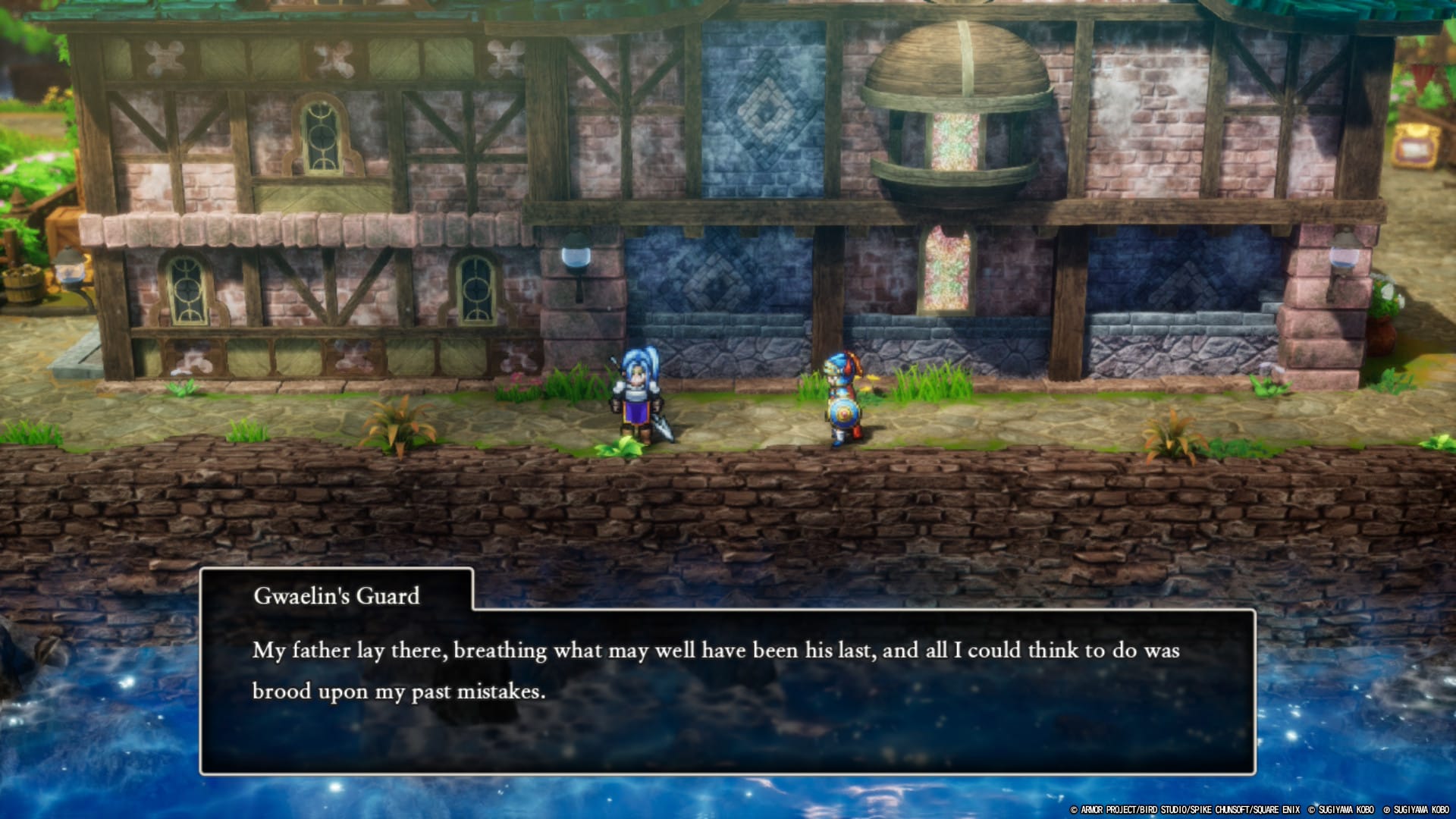
Despite being the origin of the “But thou must!” trope, the romance between the Hero and Princess Gwaelin is absolutely adorable. The game manages to give the Hero so much personality through just a few simple animations, and gives Gwaelin a ton more agency. You can tell the development team wanted to both respect the original work while updating it to modern Dragon Quest standards and giving everything its own, unique spin. With so much added and changed, the game’s length is back to the original NES version’s 10-12 hours, as opposed to the 8 or so hours it takes to finish the other remakes. There is still a lot of grinding, but it moves nowhere near as slowly as the original, so this remake is jam-packed with stuff.
That stuff includes a ton of new spells and abilities to use in turn-based battles. You’ve got several levels of Heal, Sizz, Crack, and Zap as well as Falcon Slash, Cattle Prod, Dragon Slash, Focus Pocus, and much more. After acquiring the newly added Sigils, some of these spells and abilities can be altered by holding the Y button as the Hero uses them. Sometimes, this will simply make the move more powerful, but others can become entirely new moves, such as Magic Barrier turning into 0-Zone, which removes all MP cost for several turns. Experimenting to find out what you can really do is a lot of fun, though it will drain your MP quickly. You really have to keep items like Magic Waters or Prayer Rings handy, as you’ll run out of magic constantly, even with the Restore HP and MP on Level Up option turned on.
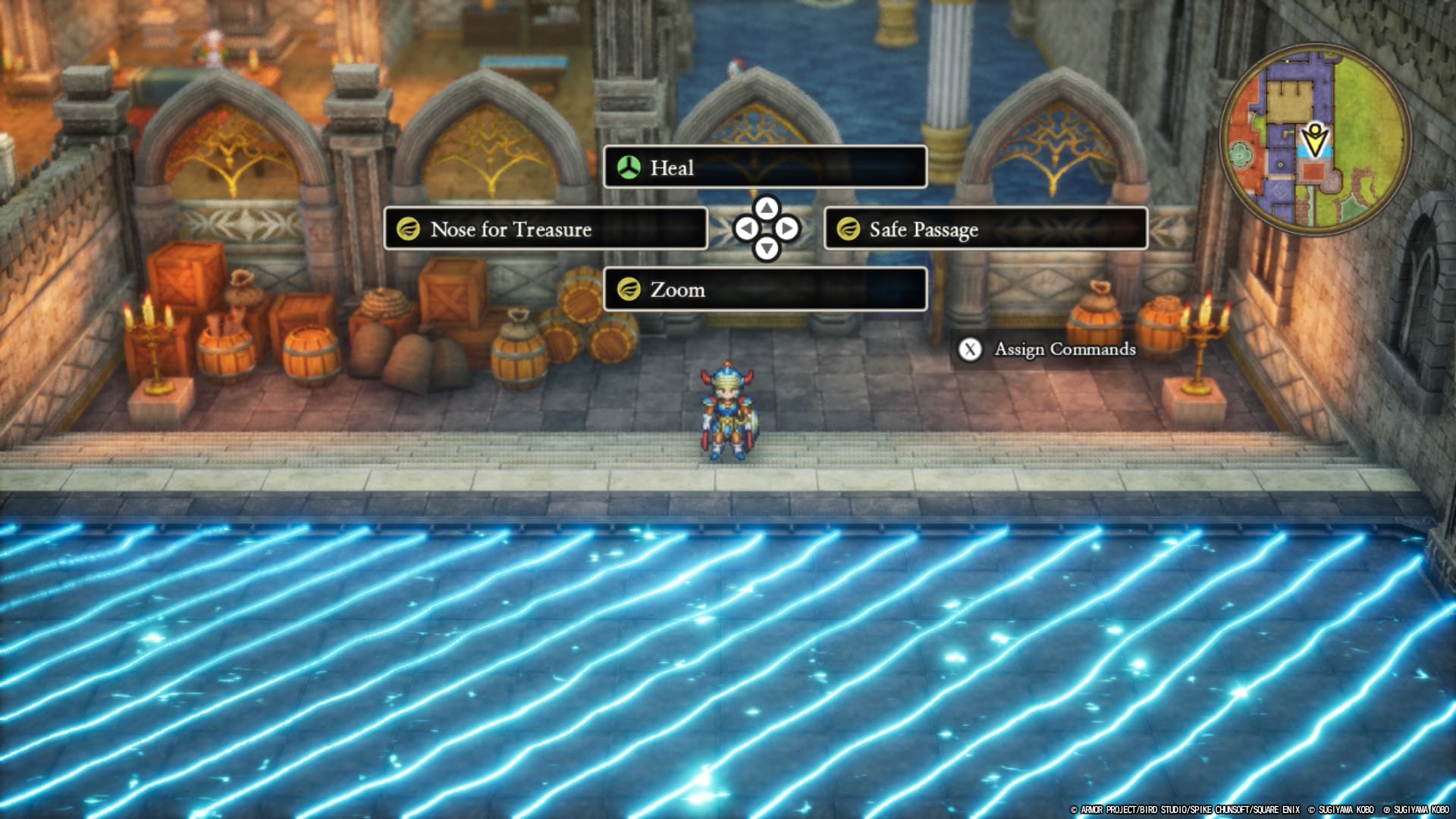
You won’t learn everything by leveling up, however, and must instead seek out Scrolls hidden throughout Alefgard. Using a Scroll will teach you whatever spell or ability is inscribed within. It’s a nice way to connect exploration and battle, constantly rewarding you with more options by searching every nook and cranny of the kingdom.
Revisiting Alefgard in the stunning, HD-2D style is an absolute treat, both visually and audio…-ly. The spritework and animations are gorgeous, and the voice acting, while sparse, is universally great. If you’ve played the game, you already know the music is phenomenal as well, but it’s now orchestrated, giving a lot more depth and emotion to the tunes. There’s not a big variety of tracks here; you’ll be hearing the standard battle theme a lot, but they’re all good.
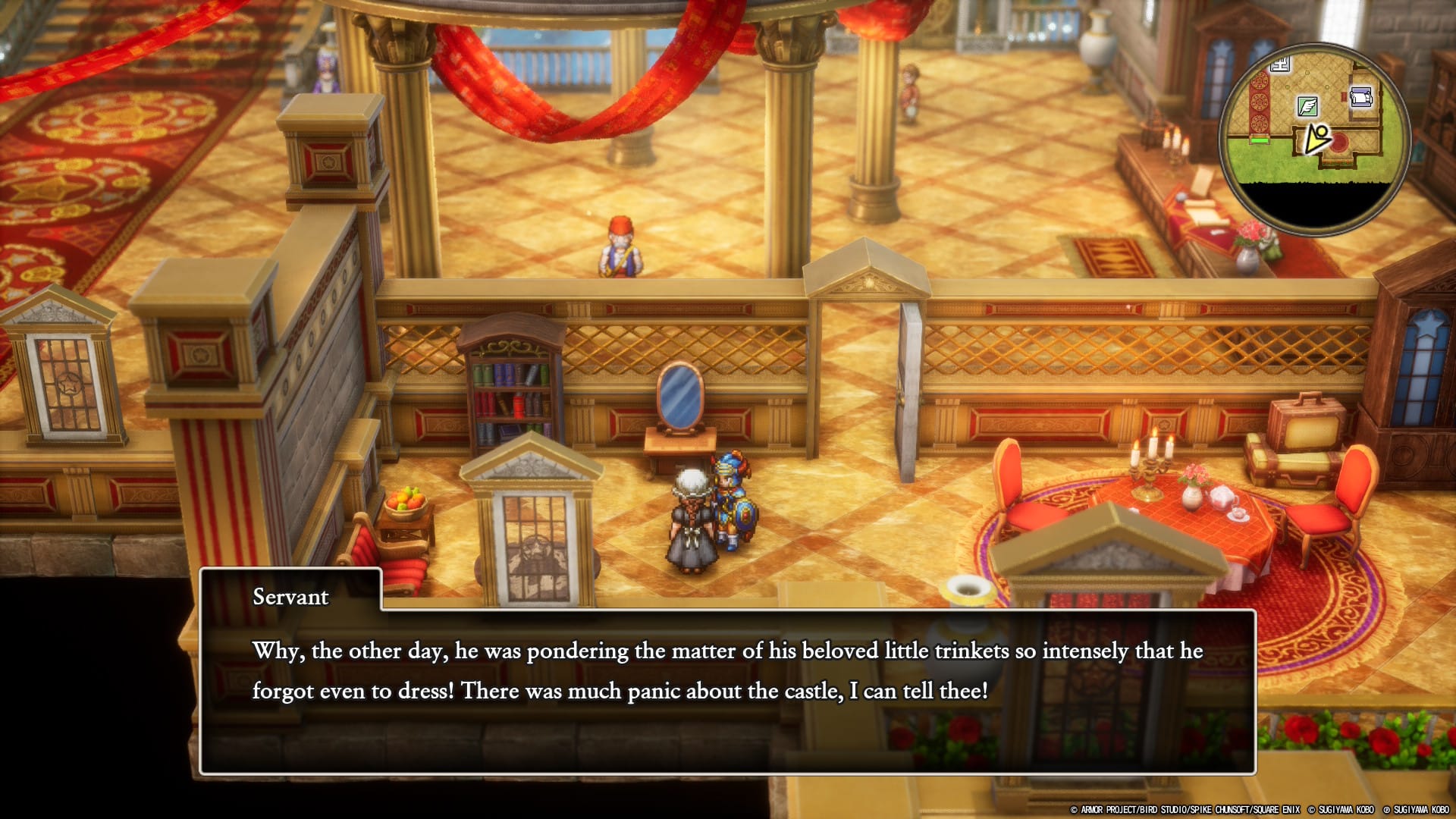
This is easily the most interesting remake of Dragon Quest, even if it isn’t the most refined. Its core has been altered in key ways, both good and bad, and yet it still retains the spirit of Dragon Quest, both the game and the series as a whole.
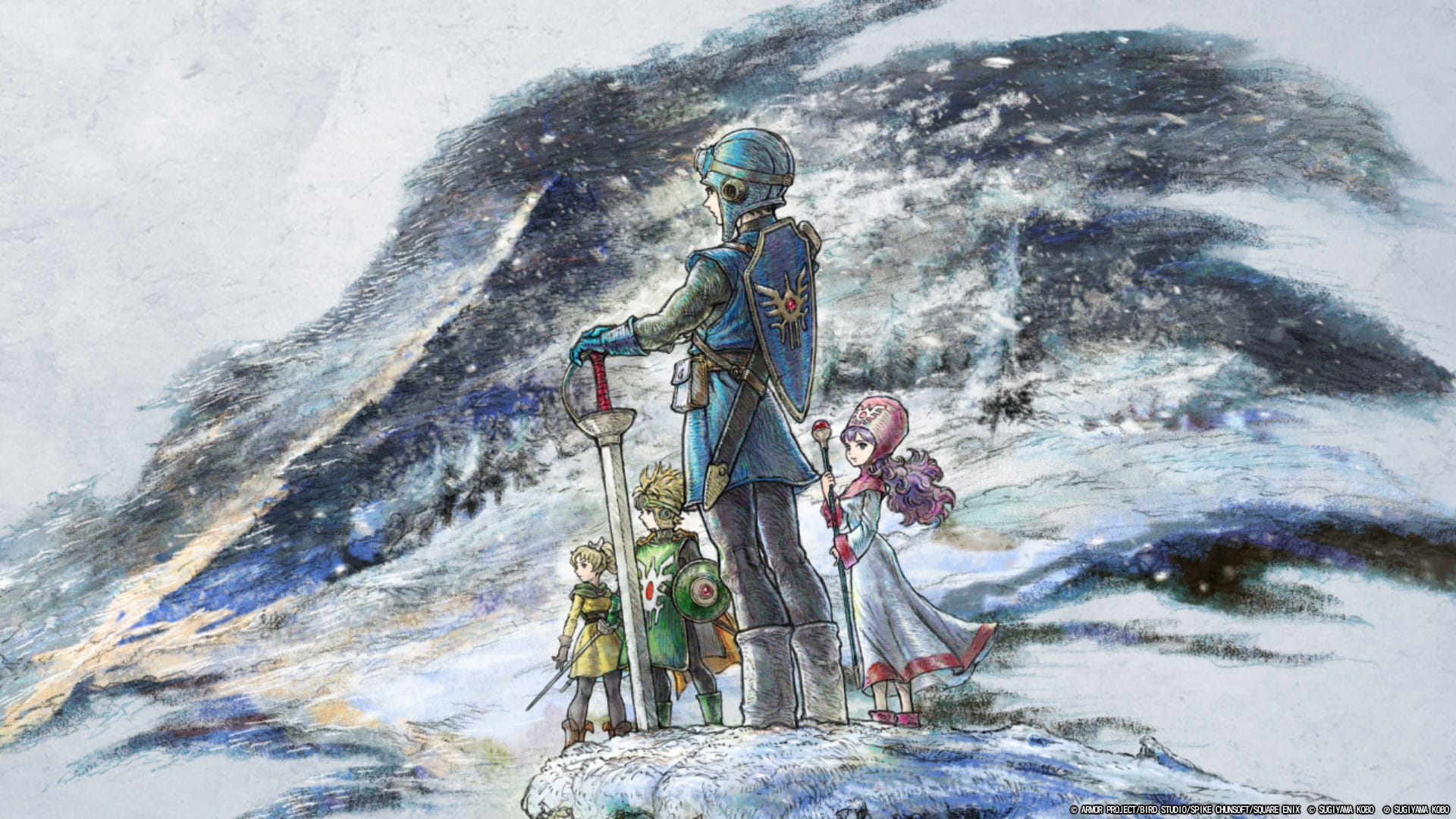
DRAGON QUEST II
Generations have passed since the Hero, now known as Erdrick, like his ancestor, saved Alefgard and the world from the tyranny of the Dragonlord. Erdrick and his bride struck out on their own, establishing a new kingdom across the sea: Midenhall. Some royal descendants of Midenhall, too, would establish the kingdom of Cannock further afield, and the cycle repeated itself a final time to form Moonbrooke. Within each royal line still beats the blood of Erdrick, lying dormant to one day rise against evil again. When Moonbrooke falls to the villainous High Priest Hargon, the princes and princesses of the three kingdoms band together to banish the darkness once more.
Dragon Quest II is often considered the black sheep of the series, being one of the most difficult and unforgiving titles. It’s not a bad game, per se, and while it pushed the series forward by adding more party members and more enemies to fight at once, it could feel very unfair at times. Many players who reached the final stretch of the game would simply give up when faced with the almost insurmountable challenges of the final gauntlet, that is, if they could even get that far. Its predecessor was also very difficult, but this sequel may have asked a bit too much of the player, even back in 1987.
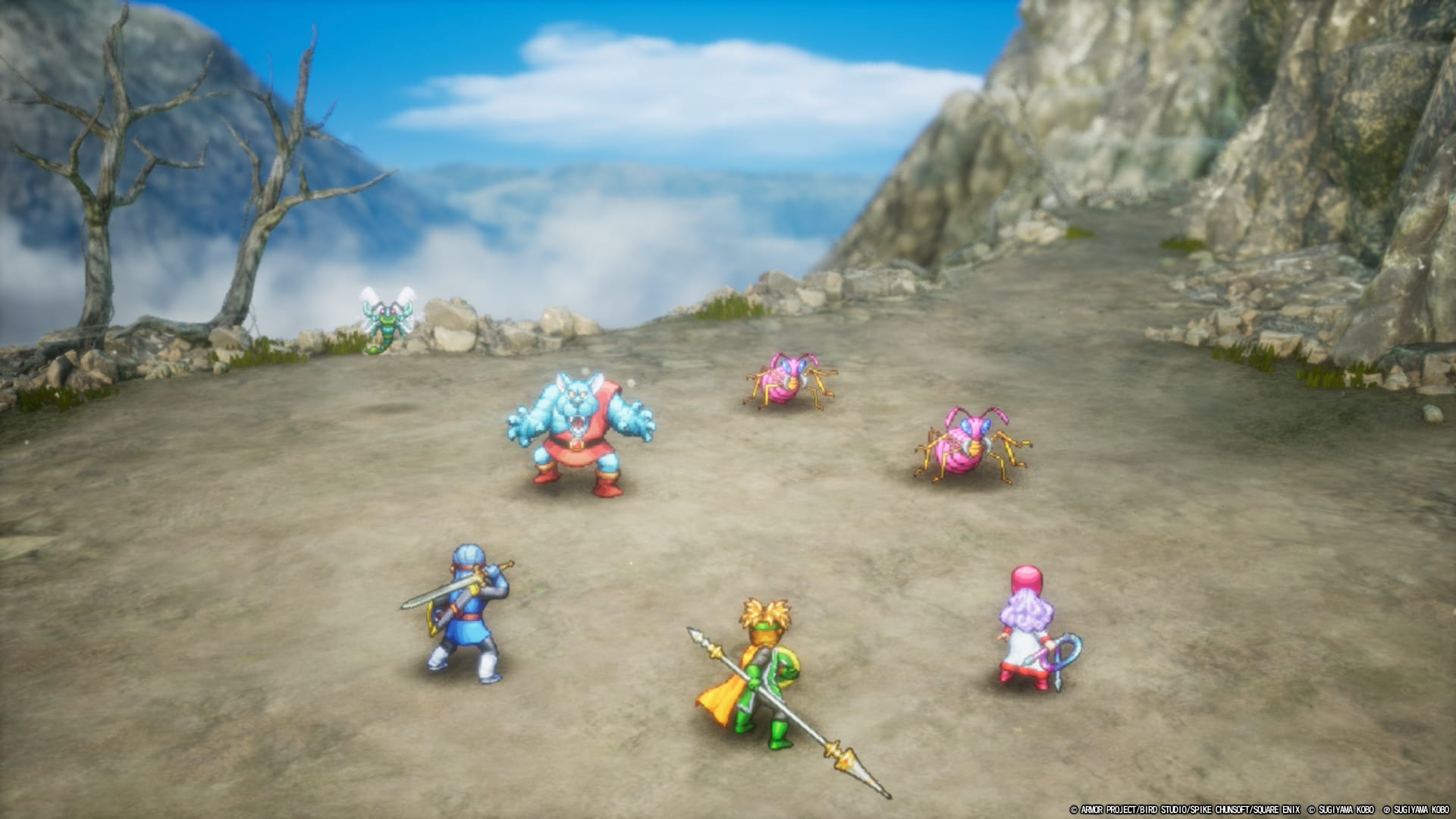
When I played the game through its Switch port a few years ago, I enjoyed it and appreciated what it did for the series, but felt it was somewhat unremarkable. It didn’t have the novelty of a single hero party nor the fleshed-out plot and characters of future titles like Dragon Quests 5 and 8. It was basically the primordial soup of Dragon Quest, without any of the spice or flavor that makes you fall in love with one of those titles.
With all of that out of the way, this remake of Dragon Quest II might just be one of my favorite entries in the series now, up there with 3, 8, and 11. It is absolutely the highlight of this package, and is fit to bursting with new story details, gameplay tweaks, and, most importantly, personality. The original game’s heroes and heroine were basically blank slates in previous versions, but now they’re fully realized characters. Having seen her kingdom razed before her eyes, the Princess of Moonbrooke, now officially named Peronel, swears vengeance on Hargon, wanting to destroy his minions at every turn. Meanwhile, Caradoc, the Prince of Cannock, is more aloof and lighthearted than his cousins. He can take things seriously and is polite and princely, but will run his mouth at every opportunity. The Prince of Midenhall remains nameless and silent, but now we also have a fourth member of the band: the Princess of Cannock, Matilda.
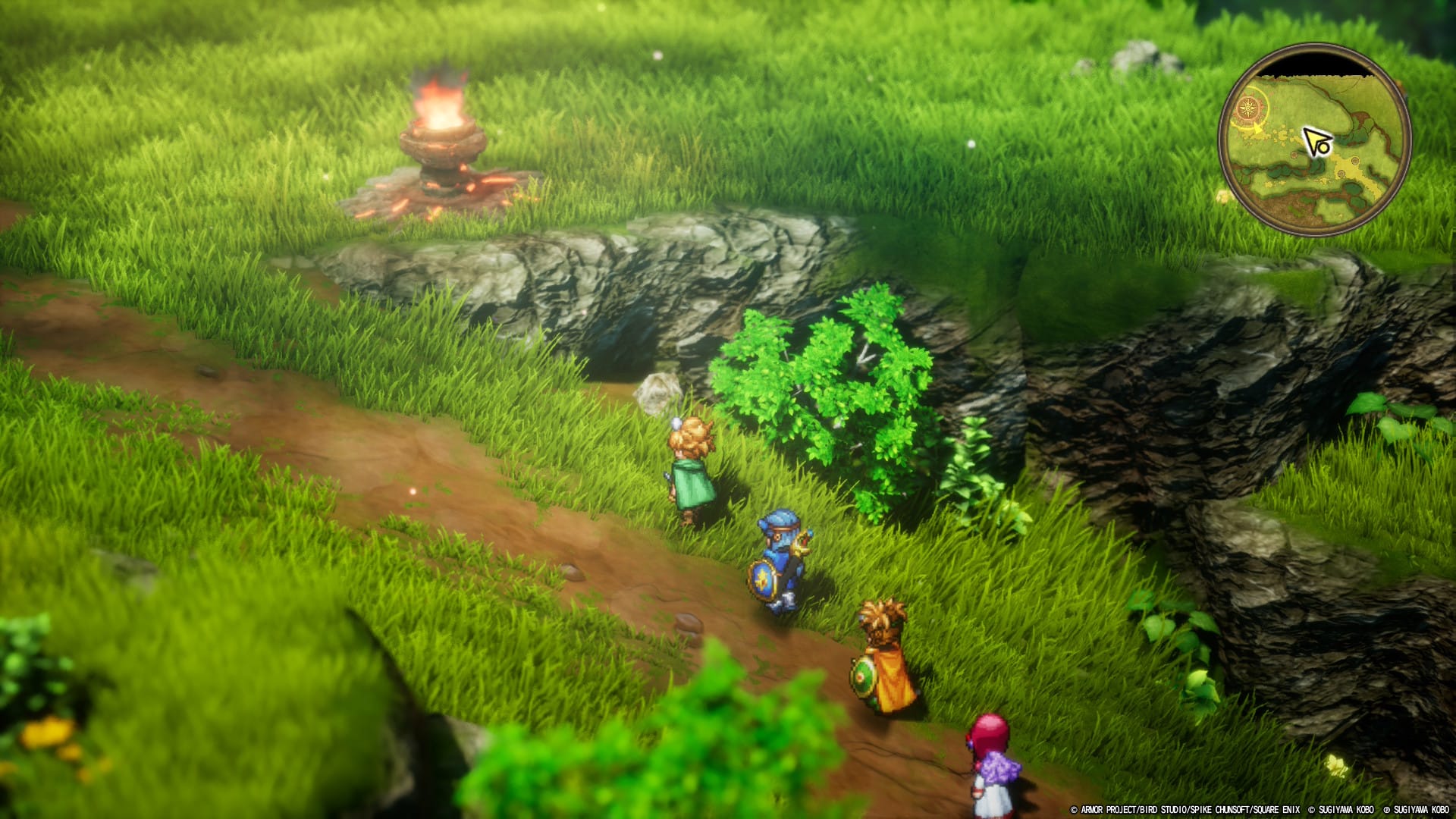
In previous versions of the game, the Princess of Cannock always wanted to join the party on their journey, but was just a little too young for a dangerous, globe-trotting adventure. Here, though, Matilda’s not gonna let that stop her. She won’t join you properly until several hours into the adventure, but she’s a joy to have around. She’s naive, but eager and always chomping at the bit to do what she thinks is right, even if she finds herself in way over her head immediately. They’re all such fun characters and have some great interactions over the course of the game. I absolutely adore Peronel and her arc, which is further bolstered by some stellar voice acting.
Each character’s personality is further conveyed through their abilities in battle. The prince of Midenhall is stoic and steadfast, being the best physical attacker and having the highest defence and HP. Caradoc is a jack of all trades, dipping his toes into both magic and martial arts while excelling in neither. Peronel is a pure mage, able to wield the best offensive spells right alongside buffs, debuffs, and healing. Finally, Matilda is brimming with potential, able to cast powerful spells and wield powerful abilities, so long as she can actually focus on the battle in front of her. As someone who played a previous version, it’s fascinating to see them draw out such interesting personalities just from how the original 3 heroes already played.
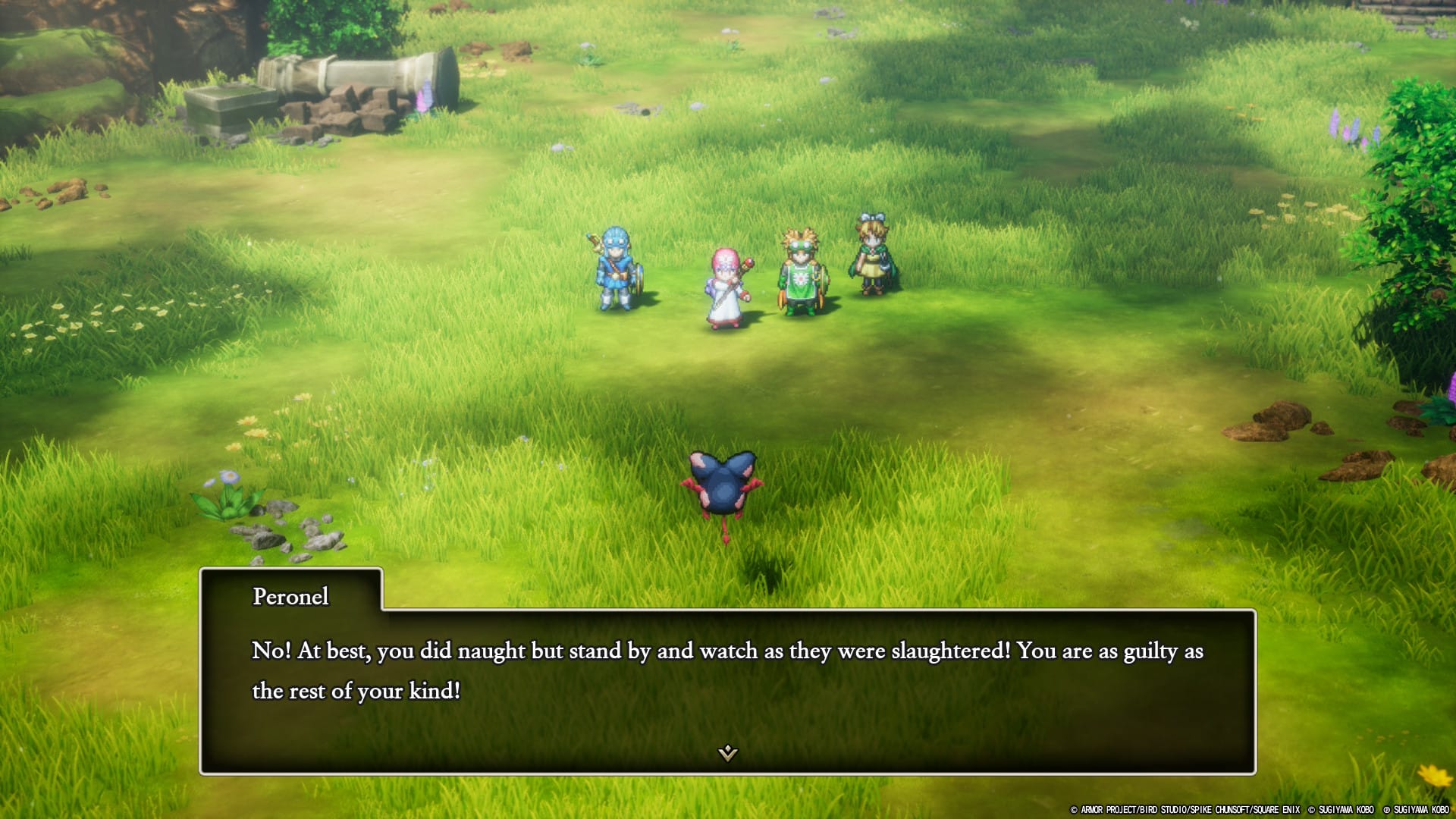
Dragon Quest II strikes a much better balance than its counterpart in this duology in terms of difficulty. You’ll still struggle if you’re underleveled, don’t have good gear, or aren’t planning ahead, but it never feels unfair. If you misstep in certain encounters, you’ll quickly find yourself with a ticket on the pain train express, while in others victory can feel almost effortless. It certainly helps that you have four actions every turn here as opposed to just one, so things feel a lot fairer when enemies get more than one action too.
You’ll be fighting a lot here because the notoriously high encounter rate remains in this remake, even though it seemed to be halved in Dragon Quest I’s case. It can be frustrating when exploring the world map, but I actually didn’t mind it too much overall. The high number of battles means you never really have to stop what you’re doing and grind as you’re constantly gaining levels. This also means you don’t have to backtrack through a dungeon after leaving to restore MP at an inn, so long as you have the restore HP and MP upon Level Up option turned on. It gives the adventure a rather brisk pace; you’re always moving from one goal to the next, growing in strength all the while through levels, gear, and Scrolls.
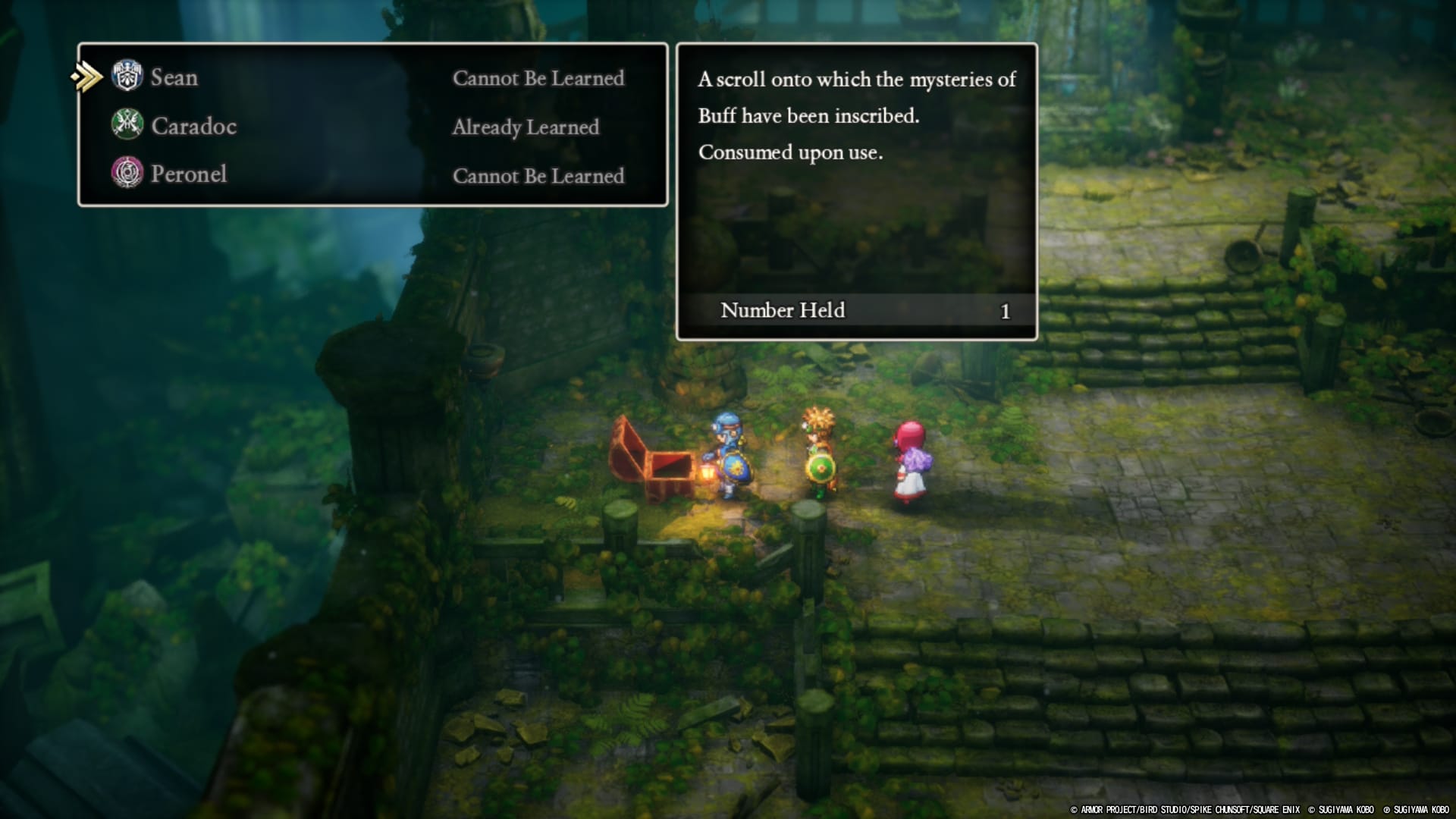
Scrolls in Dragon Quest I are pretty simple, just use them to learn something new, while Scrolls in Dragon Quest II offer a bit of choice in who to use them on. You can find additional copies of scrolls so multiple party members can learn key abilities or spells like Buff, but since you never know if you’ll ever actually find another copy, deciding who gets what makes for some interesting choices. Not every character can use every scroll. The Prince of Midenhall can’t actually use magic, for example, but it’s still a fun form of customization.
I’m absolutely astonished at how they’ve managed to turn what was once a low point of the series into one of its peaks. Dragon Quest II greatly expands on what was already there in the original Famicom title, making it bigger, better, and far deeper. Take notes, games industry. This is how you do a remake.
DRAGON QUEST I & II HD-2D Remake
Excellent
Dragon Quest I & II HD-2D Remake isn’t what I expected in the best possible way. The remake of Dragon Quest I is great, if frustrating at times, as it fleshes out the characters and combat of Alefgard. Dragon Quest II is the real highlight here, though, transforming the black sheep of the series into one of the best entries with delightful characters, a gripping story, and fun, strategic battles. Both games are gorgeous, with fantastic pixel art and orchestrated music, so they’re both well worth your time.
Pros
- Amazing visuals, voice acting, and music
- Additions to story and gameplay feel natural
- Dragon Quest II feels totally transformed
Cons
- Dragon Quest I can feel a bit unfair at times
- The encounter rate can be a little too high on the world map
This review is based on an early Nintendo Switch 2 copy provided by the publisher. DRAGON QUEST I & II HD-2D Remake comes out on October 30, 2025.
